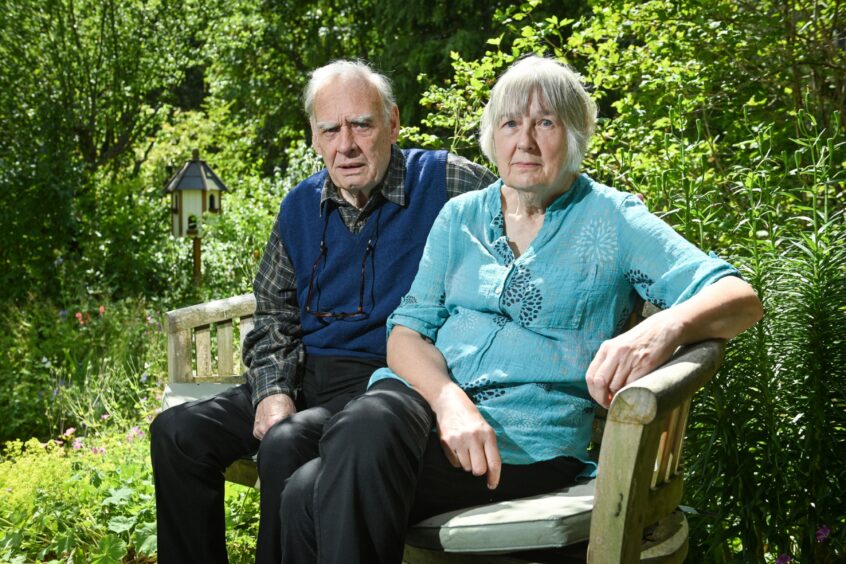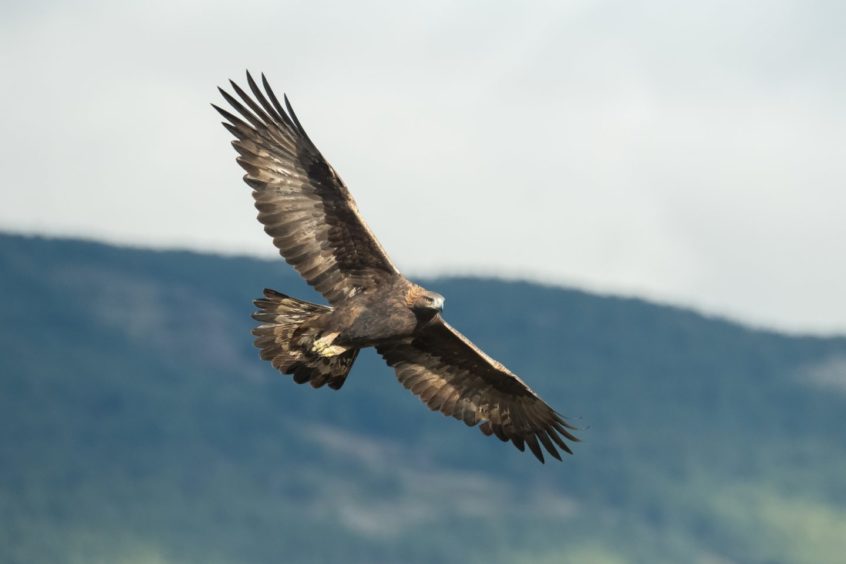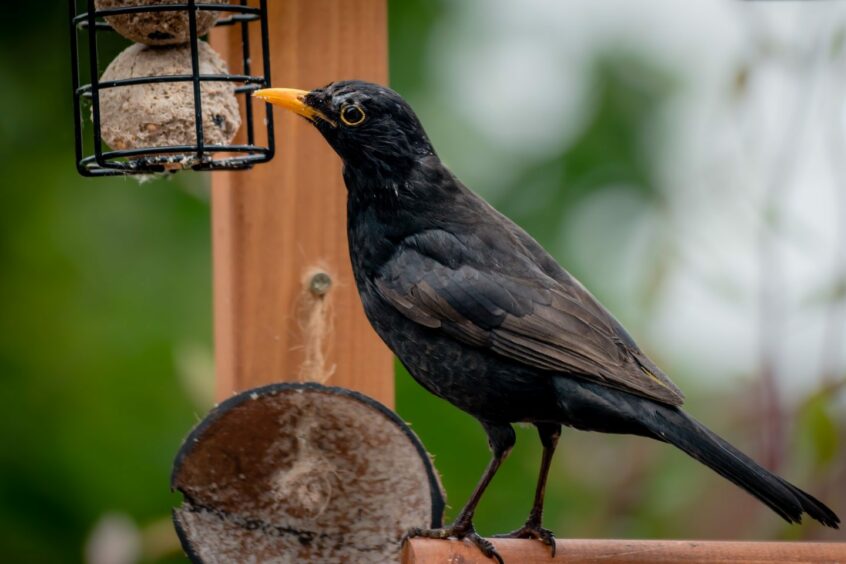A retired couple who have found five dead birds in their garden over the last two weeks fear that the animals were infected with bird flu.
Laurence and Alison Banks discovered the fresh carcasses of two pigeons and three other birds, including a thrush and a baby bird, possibly a sparrow in their garden in Boat of Garten.
Retired head teacher Mrs Banks, 73, said she picked them up with an old towel and noticed before putting them in the bin “there wasn’t a mark on them – they must have just keeled-over”.
“I don’t know anything about birds,” she said, “but in the 13 years we’ve lived here we’ve only ever found the odd dead bird and now suddenly five in a fortnight so it seems like there’s some kind of disease in them because they weren’t damaged.”
‘Other garden birds look poorly too’
Mr Banks, 78, said he’s noticed a few of the other birds coming to their bird table for breadcrumbs seem a little off-colour.
The former fire service officer said: “I’ve seen at least two poorly ones wobbling about looking very fed up, you just know they’re not right because they don’t run around or fly away when you come near them.
“There’s not very much we can do for them, but we just thought given we have this widespread problem with bird flu, we should get this highlighted.”
What can the official figures tell us?
The strain of bird flu currently affecting thousands of geese, ducks, swans, birds of prey, and seabirds, is an infectious type of influenza that spreads among birds.
It appears to be spreading in wild birds more easily than ever before, making regional outbreaks hard to contain.
Thousands of seabirds are dropping dead from bird flu at Scotland’s most important seabird colonies but the actual number is hard to gauge as not all birds are being tested.
Many birds are also dying on popular beaches like Brora in Sutherland and Cruden Bay in Aberdeenshire, and there are concerns crows, gulls and mammals like otters which are scavenging on dead seabirds will pick up the virus and pass it on to other birds, animals and even humans.
This is the first time I've seen an Otter take a bird – sadly this Guillemot was probably suffering from avian flu. It was dragged off where we couldn't see it, and I'm really hoping the Otter doesn't become infected if it did consume the bird. pic.twitter.com/8er68ENbSi
— John Moncrieff (@mostlyotters) July 10, 2022
Shetland-based wildlife photographer and guide John Moncrieff recently took a picture of an otter with a limp guillemot in its mouth.
He said another guillemot nearby was “obviously sick and the one that the otter took was probably sick too because usually those birds do not sit on the rocks”.
Humans can catch bird flu too, although it is rare.
Figures from the World Health Organisation say that since 2003, a total of 863 cases of influenza A(H5N1) human infection have been reported worldwide, including one case in the United Kingdom earlier this year and one in the United States.
How many garden birds tested positive?
The RSPB says it “understands” the risk of garden birds catching bird flu is “very low” and that it is “extremely unlikely” that bird flu can be transmitted to people by feeding birds on birdfeeders – but it encourages people to wash feeders weekly and bird baths daily.
UK Government figures show all but four of the 534 birds that have tested positive in Scotland since January to date were geese, ducks, swans, birds of prey, and seabirds.
A crow tested positive for bird flu in Dumfries & Galloway in June, a wood pigeon tested positive in Aberdeenshire in March, a blackbird in Angus and a magpie in Aberdeenshire tested positive in February.
Findings in England and Wales have followed a similar pattern.




Conversation